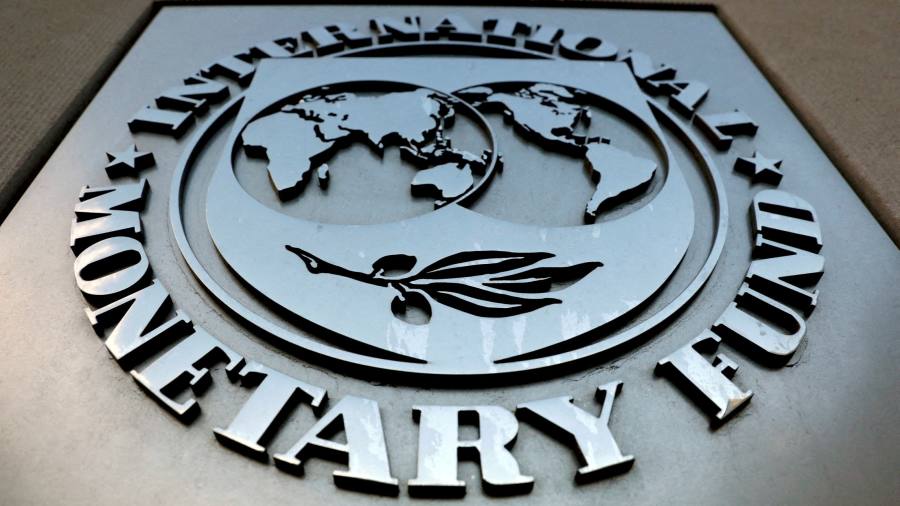The IMF has warned of a “hard landing” for the global economy if persistently troublesome inflation keeps interest rates higher for longer and amplifies financial risks.
Although the fund left its overall economic forecasts largely unchanged from January in its latest World Economic Outlook, published on Tuesday, it stressed that signs of resilience alongside lower global energy and food prices masked a darker reality.
Pierre-Olivier Gourinchas, the IMF’s chief economist, said: “Below the surface . . . turbulence is building, and the situation is quite fragile”.
“Inflation is much stickier than anticipated even a few months ago,” he said. “More worrisome is that the sharp [monetary] policy tightening of the past 12 months is starting to have serious side effects for the financial sector.”
In its twice-yearly full forecasts published on Tuesday, the IMF said the turmoil in the UK government bond market last autumn and last month’s US banking turbulence showed the “significant vulnerabilities [that] exist both among banks and non-bank financial institutions”.
“Risks to the outlook are heavily skewed to the downside, with the chances of a hard landing having risen sharply,” the IMF said.
Gournichas told the Financial Times that, while the banking system was far more resilient than during the 2008 crisis, policymakers had to “think about what could go wrong”.
“We can all remember the long time between the failure of an individual institution, whether it was Bear Stearns or Countrywide,” he said, referring to institutions that failed more than a decade ago. “Every time, this was treated like an isolated incident, until it wasn’t.”
The IMF’s new forecasts showed a 25 per cent chance that the annual global growth rate could fall below 2 per cent in 2023, a risk twice as large as normal. The global economy has only grown that slowly in five calendar years since 1970.
If a significant financial shock hit — something the IMF attached 15 per cent risk to — the fund said global growth was likely to fall below the rate of population growth and result in a global recession.
In the IMF’s unchanged central forecast, the global economy is expected to grow 2.8 per cent in 2023, rising to 3 per cent in 2024 and sticking at around that level until around 2028.
Last week, Kristalina Georgieva, IMF managing director, said this was the weakest medium-term outlook for the global economy since 1990.
Gournichas told the FT the fund was projecting “supercharged” growth in China with other countries reverting to a more normal rate. The IMF also assumes that global productivity will deteriorate while economies will suffer from pandemic “scarring”, and fragmentation amid geopolitical tensions.
The US economic forecast has been raised versus the January forecast and the fund is now expecting growth of 1.6 per cent in 2023 and 1.1 per cent in 2024. Three months ago, the IMF was projecting a 1.4 per cent increase this year followed by a 1 per cent expansion the following year.
The eurozone is expected to grow more slowly at 0.8 per cent this year as member states deal with last year’s energy price increases before recovering to a 1.4 per cent rate in 2024.
China’s forecast growth rate of 5.2 per cent in 2023 from the IMF is in line with the Beijing government’s target, although the fund expects it to slow to 4.5 per cent in 2024.
The IMF called on central banks to keep working to bring inflation down and for governments to help by removing some of the fiscal support offered in recent years to deal with Covid-19 and the energy crisis.
So long as financial markets remained relatively stable, central banks should do everything they can to beat inflation, the fund said. Gournichas warned price pressures could continue to prove more persistent, which would result in a “harder landing scenario”.
“There is a concern out there that we may not have enough tightening in the system at this point and more will be needed,” he said. “That would certainly increase the odds that output would come down further compared to our projections.”
However, a credit crunch, which some economists are predicting in the wake of the recent US banking turmoil, could act as a disinflationary force, he said.
“As long as it is orderly, some of this lending contraction may actually be beneficial in terms of bringing down inflation and may substitute for further interest rate hikes,” Gournichas said.
Read the full article here




